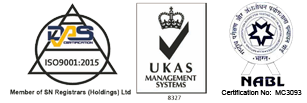ECHOCARDIOGRAPHY
Echocardiography is a test that uses sound waves to produce live images of your heart. This test allows your doctor to monitor how your heart and its valves are functioning if they have discovered an abnormality from other testing or while listening to your heartbeat through a stethoscope. If you have an irregular heartbeat, your doctor may want to inspect the heart valves or chambers or check your heart’s ability to pump. They may also order one if you’re showing signs of heart problems, such as chest pain or shortness of breath.
The images are called an echocardiogram and can help them spot:
- Blood clots in the heart
- Fluid in the sac around the heart
- Medical problems with the aorta
- Health of the heart muscle, especially after a heart attack.
- Heart defects in unborn babies.
Preparation
Your doctor may instruct you not to eat anything for a few hours before the test. This is to prevent you from vomiting during the test. You may also not be able to drive for a few hours afterward due to the sedatives, if required. Wear clothes and shoes that are comfortable to exercise in. Taking an echocardiogram is painless and risks exist only in very rare cases with certain types of echocardiograms.


